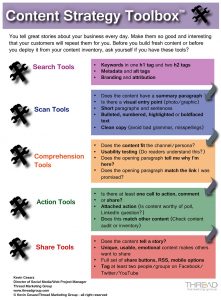
Normally, SEOs are asked by business owners to devise an optimization plan for the website so that the business gets on top of the search engine results page without being particular about getting ahead of one specific brand competitor. But for some business owners, being generic may not be their measure of success but rather in being successful in taking the lead over the topmost rival in the industry.
So when challenged by a client towards this objective, how would you plan your SEO tactics? The following content strategy methodologies may be of help:
-
Expanding visibility in areas which are considered business threats
-
Understanding the points of competition between your business and your rival
-
Understanding ways to gain advantage over your competitor
-
Expanding your visibility by focusing on areas where customers are being underserved.
In order to achieve your specific objectives towards beating your top rival, you may consider:
-
Using Keywords and Click Curve Data. For any SEO-friendly content, relevant keywords still play a critical role. Your keywords should be grouped by topic and for each keyword you will need data about your organic rank, your rival’s organic rank, and exact match local search volume. In addition you need click curve data in a separate table. With these data you can estimate the current traffic for your site and your competitor’s for specific keywords. This is done by multiplying the exact match search volume by the CTR (click through rate) figure that corresponds to the current rank. This article would help you determine which keyword to use for your website.
-
Determine Traffic Differences. You can check the percentage difference between your traffic and your competitor’s. A negative figure is an indication that your competitor receives more traffic for a keyword.
-
Classify Each Keyword. Keywords are classified based on the following criteria:
-
Keywords which people search but neither your brand or the competitor receives traffic
-
Keywords where your site receives 100% more traffic than competitor
-
Keywords where potential traffic is being shared equally by both brands
-
Keywords where your competitor receives 80% more traffic than your brand
-

These data will give you the keywords that you should be interested in using.
-
Get Visual. You should have a clear picture of how much traffic your brand and your rival is getting or the size of the business success sector in relation to the business threat sector. You should be able to visualize how well the content of your brand serves the interest of the consumers and which topics content creation should be focused on in a bid to steal the rival’s SEO market share.
-
Prioritize Terms. In order to generate effective content for your brand, you should prioritize the most important terms or keywords. You can use Moz’s tool – keyword difficulty estimator. This will give you an idea of the challenge your rival will have in improving the ranking for said keywords. Multiplying the difficulty score by the search volume for each keyword will give you an idea of how important a keyword is.
-
Brainstorm. It’s always useful to brainstorm on the methodologies especially on the topics identified as priority.
Conclusion
In order to value these methodologies, a content strategy template may be downloaded to facilitate the processes outlined above. Such template should enable you to compare and contrast your content strategy and SEO performance with what your rival is implementing and eventually find a way to quell the effectiveness of your rival’s strategy.
Keyword research is integral to SEO cycle. It is not a one time process that your SEO company must provide you at the beginning of the project; keyword research and analysis must be provided whenever there are changes in the keyword statistics. Doing this, will help your business serve its clients better by providing them what they need and what they want.



